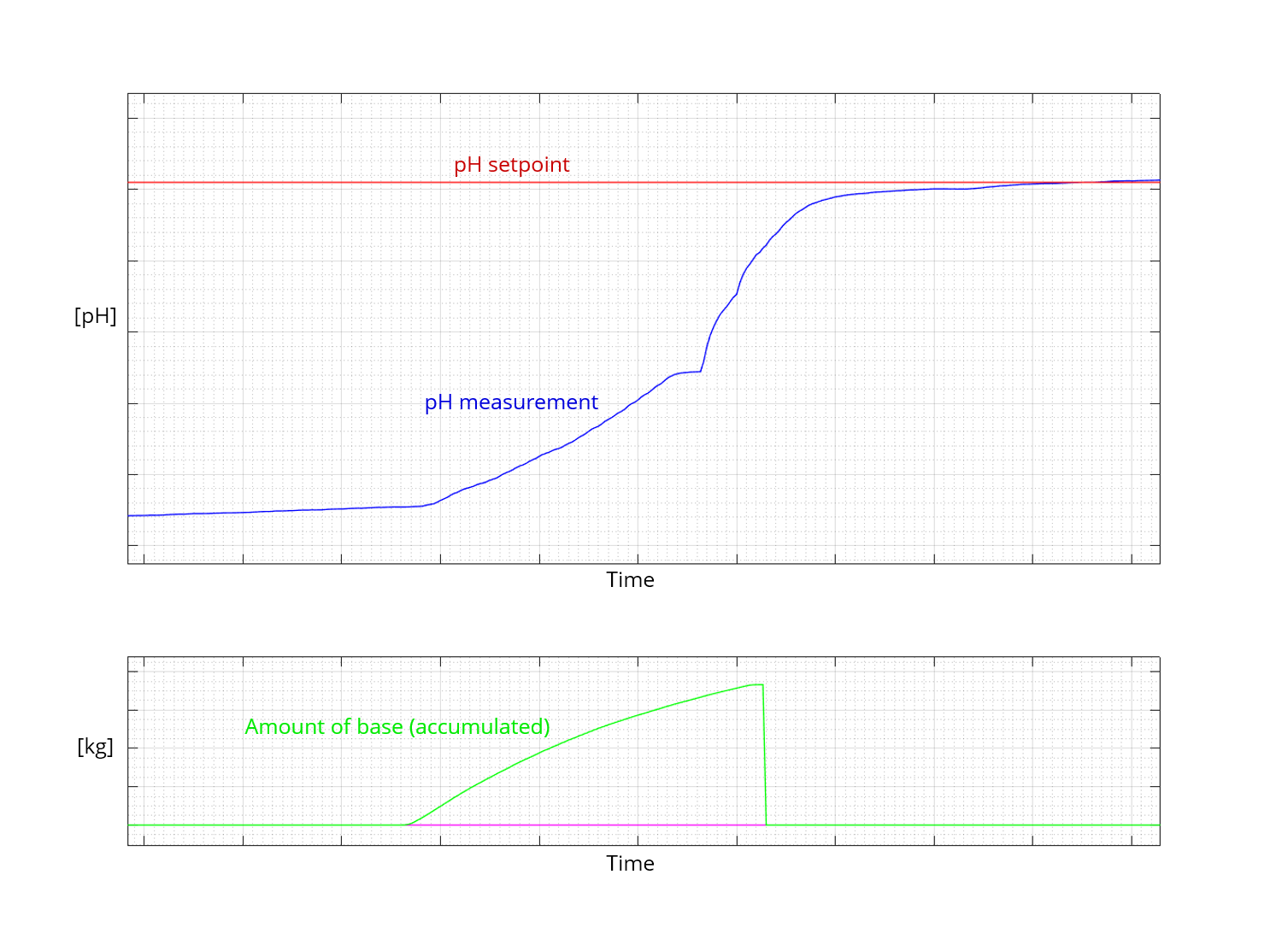Case Model predictive control of amino resin production
Cybernetica delivers Model Predictive Control (MPC) and Endpoint Prediction of amino resin manufacturing processes based on Cybernetica CENIT.
MPC is used for control of reactor temperature, pH and reaction rates of Urea-Formaldehyde (UF) and Melamine-Urea-Formaldehyde (MUF) manufacturing processes, by controlling cooling and heating utilities and dosing of base and acid.
The main benefits of using this technology compared to conventional control are:
- Accurate control of pH during dosing of base and acid. Amounts of base and acid are minimized to avoid overbuffering of the resin.
- Consistent reaction rates during condensation, using both inline pH and viscometer, and by controlling the viscosity rate of change.
- Accurate temperature control.
- Shorter and less variations in batch cycle times.
- Improved safety by preventing condensation runaway and gelling.
- Accurate endpoint determination (cut-off).
- Less need to take grab samples from the reactor.
- Less operator intervention – higher degree of automation.
The essential features of the CENIT technology, which enables the above benefits, are:
- Online parameter estimation – the model adapts online to changes in process conditions.
- Predictive control – the future process performance is continuously predicted and optimized.
Process modelling
The mechanistic process model utilized within Cybernetica CENIT is adapted to each specific process unit. Reactor design data are acquired from the customer. Other model parameters are estimated off-line from logged process data using Cybernetica ModelFit.
Model of UF/MUF resin reactor
- Kinetics and thermodynamics:
- Methylolation reactions
- Condensation reactions
- pH model
- Viscosity advancement model
- Cooling and heating utilities:
- Coil cooling is dependent on estimated heat transfer coefficients and on the liquid level in the reactor.
- Reflux condenser and vacuum system.
- Steam heating.
- Feed systems for raw materials
Viscosity advancement model
The viscosity advancement is predicted based on the kinetic model. Since the viscosity depends on many factors, it must be updated from viscometer measurements.

Model predictive control (MPC)
MPC enables safe and accurate control of pH, temperature and viscosity advancement by controlling:
- Dosing of base and acid.
- Coil cooling, jacket cooling and steam heating.
- Vacuum and condenser cooling during polymerization and distillation.

The viscosity rate of change model is used to keep the viscosity advancement rate within maximum and minimum limits during condensation, and to adjust the pH by dosing base or acid as required.


Safe operation
The use of both inline pH and viscometer measurements, in combination with the pH and viscosity advancement models, are essential to reduce the risk of runaway reactions and gelling of the reactor content during condensation. pH probes might drift over time and viscometers might fail to give accurate viscosity readings. By applying both measurements and by requiring both the pH and the viscosity advancement to be controlled within safe limits, reaction runway due to single sensor faults is avoided.
In addition to the inherent safety associated with the MPC methodology and the online model adaptation, the CENIT system includes fault detection and diagnosis functionality.
Operator graphic for polymerization monitoring and endpoint prediction
The system includes an operator graphic display where the profiles of temperature, reaction heat versus cooling capacity, pH, viscosity and viscosity rate of change are compared to those of a previously manufactured “golden batch”.
The purpose of the system is to:
- Monitor the development of the current batch, as compared to the golden batch.
- Detect deviations between the current batch and the golden batch.
- Predict the future progress of the current batch, including the endpoints.
A snapshot of the graphic display during condensation is shown in the figure below. The history is displayed to the left of the vertical line indicating present time. The graphic display is used to monitor the current batch (solid lines) by comparing with a previously manufactured “golden batch” (dashed lines). The viscosity and the target viscosity are shown in the upper graph; the viscosity rate of change and the minimum and maximum limits are shown in the middle graph; the pH and the minimum and maximum limits are shown in the lower graph.

Implementation
Cybernetica CENIT applications typically run on a dedicated application station (Windows server). It communicates with a DCS system via the Open Platform Communications (OPC) protocol.
Cybernetica employees have extensive experience in industrial implementation and commissioning of advanced process control (APC) applications.
Integration with sequential batch control system
Cybernetica CENIT can run independently of a batch control system, with the operator providing essential inputs such as temperature setpoint profiles and raw material amounts. CENIT can, however, preferably be integrated with a sequential batch control system, in which case the batch control system will provide a number of input parameters to CENIT, dependent on the current stage in the batch process and on the specific resin grade being manufactured.
Maintenance
Cybernetica’s maintenance programme ensures that all applications perform at their best at all times. Cybernetica rapidly responds to customer requests. Cybernetica CENIT has built-in functionality for reproduction and diagnosis of current or past process situations, facilitating efficient analyses of issues reported by the customer.
The most common and important issues are reported directly to the operators, enabling the operators to act when necessary.
